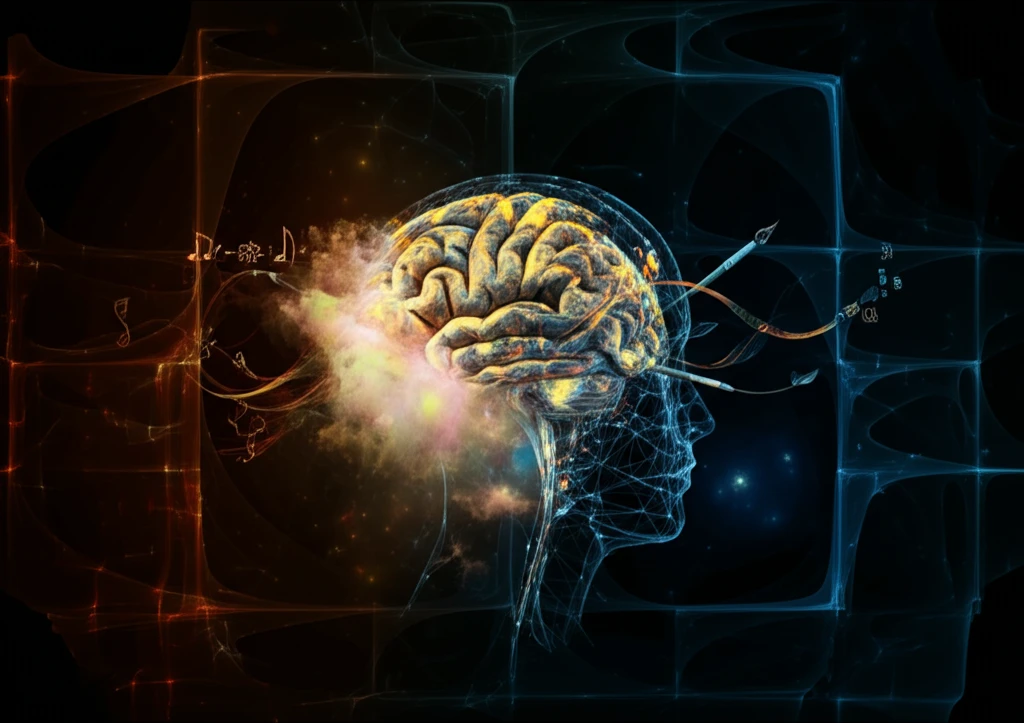
Art Meets Science: How Interdisciplinary Creativity Sparks Innovation
"Discover how the fusion of art and science is reshaping our understanding of the world, driving innovation, and fostering a new wave of interdisciplinary collaboration."
For millennia, art and science have been perceived as distinct disciplines, often relegated to opposite ends of the intellectual spectrum. Art, with its emphasis on creativity, emotion, and subjective interpretation, has long been associated with the humanities. Science, on the other hand, is rooted in empirical observation, rigorous experimentation, and objective analysis. Yet, beneath these perceived differences lies a common thread: a shared quest to understand the world around us. From the ancient cave paintings of Chauvet Cave to modern molecular biology, the interplay between artistic expression and scientific inquiry has been a constant throughout human history.
The integration of art and science is not merely a historical curiosity; it's a burgeoning movement that is reshaping education, driving innovation, and fostering a more holistic understanding of complex problems. As our world becomes increasingly interconnected and complex, the ability to bridge disciplines, think creatively, and communicate effectively is more critical than ever. The STEAM movement, which advocates for integrating the arts into STEM education (science, technology, engineering, and mathematics), is a testament to the growing recognition of the importance of interdisciplinary thinking.
This article delves into the profound ways in which art and science are converging, highlighting examples of collaborative projects, educational initiatives, and groundbreaking discoveries that have emerged from this unlikely partnership. By exploring the historical context, examining contemporary applications, and considering the future potential of this interdisciplinary approach, we aim to demonstrate how the fusion of art and science can unlock new levels of creativity, innovation, and understanding.
Historical Symbiosis: When Artists Were Biologists

The Paleolithic cave paintings found in Chauvet Cave, France, offer a compelling glimpse into the early connections between art and science. These ancient artworks, dating back over 30,000 years, depict a variety of animals with remarkable accuracy and detail. Archaeologist Jean Clottes, who led the team that dated the paintings, emphasizes that these early artists possessed an intimate knowledge of the animals they portrayed, gained through careful observation and interaction with their environment.
- Enhanced Observation: Art trains individuals to observe details and patterns, which can enhance scientific data collection and analysis.
- Creative Problem-Solving: The creative thinking fostered by art can lead to innovative approaches to scientific challenges.
- Effective Communication: Art can help scientists communicate complex ideas to a broader audience, promoting understanding and engagement.
The Future of Interdisciplinary Collaboration
The convergence of art and science is not merely a passing trend but a fundamental shift in the way we approach knowledge and problem-solving. By embracing interdisciplinary collaboration, fostering creative thinking, and promoting effective communication, we can unlock new levels of innovation and understanding. As Jonathan Kingdon so eloquently stated, "The humblest field record is always an act of translation," reminding us that all forms of inquiry, whether artistic or scientific, are ultimately about making sense of the world around us and sharing that understanding with others.
